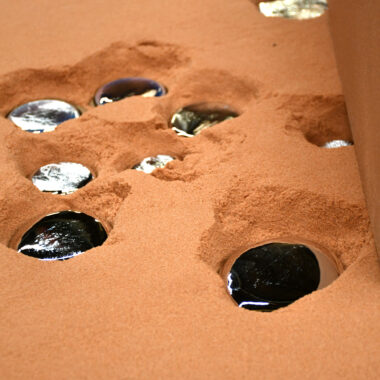Aluminum Casting Illinois: Where Innovation Meets Tradition
Aluminum Casting Illinois: Where Innovation Meets Tradition
Blog Article
Grasping the Craft: Professional Tips for Flawless Aluminum Casting Outcomes
In the realm of light weight aluminum accuracy, know-how and casting are paramount to accomplish remarkable outcomes. Understanding the craft requires a meticulous understanding of the devices and devices at one's disposal, an eager eye for preparing the light weight aluminum alloy to specific specifications, and an ingenious hand in using optimal casting methods.
Necessary Tools and Devices
Light weight aluminum casting needs details tools and equipment to make certain accuracy and performance in the process. The crucible, commonly made of graphite or ceramic materials, withstands high temperatures needed to thaw aluminum. The mold and mildew, often made of steel or sand, shapes the liquified aluminum into the wanted type.
In addition, devices like tongs, gloves, and aprons are necessary to guarantee the safety of drivers functioning with liquified light weight aluminum. Tongs provide a safe grip when managing warm crucibles and molds, while heat-resistant gloves and aprons protect against unintended burns. Appropriate ventilation systems are also crucial to remove fumes and ensure a risk-free workplace. Spending in top quality tools and devices not only improves the accuracy of light weight aluminum casting but also contributes to a much more risk-free and efficient manufacturing process.
Preparing the Aluminum Alloy
To make certain the success of the aluminum casting process, precise preparation of the alloy is critical. The very first step in preparing the aluminum alloy is to very carefully pick the ideal kind of light weight aluminum based on the attributes needed for the final product.
After cleaning, the next important action is to heat up the aluminum to the suitable temperature for casting. This procedure, recognized as alloy melting, makes certain that the light weight aluminum is in its molten kind and all set for casting (aluminum casting illinois). Furthermore, controlling the temperature throughout melting is crucial to stop overheating or underheating, which can lead to issues in the last product. In general, meticulous prep work of the light weight aluminum alloy sets the structure for a successful casting process and high-grade outcome.
Optimum Casting Methods
Executing specific casting strategies is necessary for achieving high-grade lead to light weight aluminum casting procedures. One vital technique is making sure proper mold and mildew preparation. This includes meticulous cleaning and finishing of the mold and mildew to avoid light weight aluminum from sticking and guarantee smooth spreading. In addition, controlling the putting temperature level is important. The light weight aluminum should be heated up to the optimum temperature to decrease issues like shrinkage and porosity in the final actors.
Moreover, keeping consistent pouring speed and pressure is crucial to attaining harmony in you could try these out the actors item. Stable and sluggish pouring assists stop disturbance and air entrapment, which can bring about blemishes. An additional important facet is making use of degassing representatives to remove pollutants and gases from the liquified light weight aluminum, causing a cleaner last item.

Getting Smooth Surface Area Completes
For makers looking for to boost the aesthetic allure and top quality of their light weight aluminum castings, accomplishing smooth surface finishes is an important aspect complying with specific casting techniques and correct air conditioning treatments. One trick technique to accomplish smooth surface finishes is by making use of high-quality mold and mildews that are effectively prepared and kept. The mold surface need to be diligently cleansed and coated with release representatives to avoid imperfections moving onto the actors aluminum during the cooling procedure.
Furthermore, controlling the air conditioning rate of the aluminum spreading is critical for accomplishing a smooth surface coating. Fast cooling can find out here now cause thermal slopes that result in appear flaws, while sluggish air conditioning may cause microstructural concerns - aluminum casting illinois. By executing controlled air conditioning procedures, such as using air or water quenching approaches, producers can ensure that the aluminum strengthens evenly, lowering the probability of surface area flaws
Along with mold top quality and cooling down procedures, post-casting treatments like shot blasting or chemical etching can even more improve the surface coating of aluminum spreadings. These methods help smooth out any kind of remaining roughness or contaminations, resulting in a perfect appearance that meets the finest requirements.
Quality Assurance and Troubleshooting

In the realm of troubleshooting, it is crucial to have a comprehensive understanding of common defects that can occur during aluminum spreading, such as surface, shrinkage, or porosity abnormalities. Continual improvement via top quality control and repairing techniques is basic to accomplishing perfect results in aluminum spreading.
Conclusion
Finally, mastering the craft of light weight aluminum casting needs vital tools and tools, correct prep work of the aluminum alloy, optimal spreading methods, accomplishing smooth surface coatings, and applying quality assurance steps. By adhering to these professional tips, perfect outcomes can be accomplished in light weight aluminum casting procedures. Quality control and troubleshooting are necessary elements to take into consideration to guarantee premium and regular lead to aluminum spreading projects.
The very first action in preparing the aluminum alloy is to meticulously select the proper kind of light weight aluminum based on the characteristics needed for the last item.Executing exact spreading techniques is necessary for attaining high-grade outcomes in aluminum casting processes. By grasping these optimum casting techniques, makers can continually create remarkable aluminum castings.
For producers seeking to improve the aesthetic allure and top quality of their aluminum spreadings, achieving smooth surface finishes is a vital facet following precise casting techniques and appropriate air conditioning procedures.In conclusion, mastering the craft of aluminum casting requires important tools and equipment, proper preparation of the aluminum alloy, optimal casting techniques, achieving smooth surface area coatings, and applying top quality control actions.
Report this page